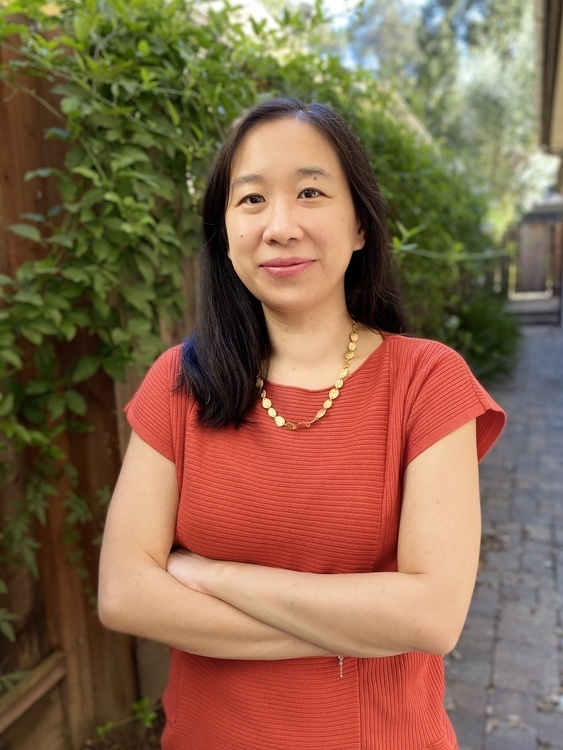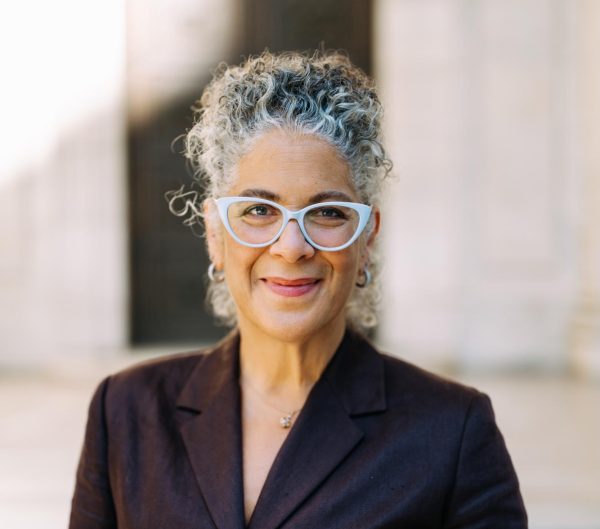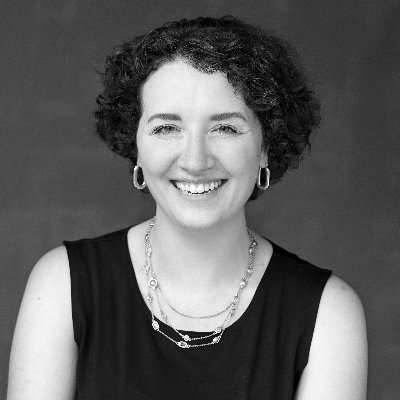Kathryn Gin Lum, Associate Professor of Religious Studies and History at Stanford University
Photo courtesy of Oberlin College
Kathryn Gin Lum
Kathryn Gin Lum is an associate professor visiting from Stanford University with a focus in Religious Studies and History. This Wednesday, as a part of the College’s Race and Religion Lecture Series, Gin Lum gave a presentation to Oberlin students on her book, Heathen: Religion and Race in American History, published May 2022 by Harvard University Press. The lecture series aims to expand the dialogue about the roles race and religion play in Oberlin’s history, and how this history impacts Oberlin’s position in broader society.
This interview has been edited for length and clarity.
Can you discuss your recently published book, Heathen: Religion and Race in American History, and why you traveled to present it in Oberlin?
The talk was framed as part of a new lecture series on race and religion, oriented around the Memorial Arch in particular, which was built to commemorate the deaths of missionaries and the Boxer Uprising. From what I understood from the invitation, my talk is trying to help contextualize the missionary outlook and think about the relationship between religious othering and racism. The talk is essentially an overview of the book, trying to understand the various arguments that I make in the book and how they connect this kind of outlook to a racial one.
When writing this story, did you draw connections to your previous publication, Damned Nation: Hell in America from the Revolution to Reconstruction?
Yes, definitely. The first book was really focused on just one century between the Revolution and Reconstruction in America. It was more like a domestic story within the boundaries of the nation-state. But in thinking about hell, I was like, a huge proportion of the people expected to go to hell in this period of time were so-called heathens. That book touches on it, but it doesn’t do as much of it as I ended up doing in the second book. Part of that is just the constraints of the first book being a graduate dissertation, and I just couldn’t do a book of the scope at that point. This one is more synthetic, so it covers centuries and tries to look at the global outlook.
In your book, you explore how the idea of the “heathen” has persisted in religious and secular discourse around race, from the colonial era to the present day. Are certain racial groups more connected to the idea of the “heathen” than others?
That’s such a good question. One of the main claims that the book tries to make is that the category is this broad, encompassing umbrella, so it sweeps all sorts of different racial groups under the heading of heathen. So what the term does is it creates a kind of binary between the heathen and the white Christian. It’s not that this binary is more important than racial hierarchies, but that we have to look at both ways of rationalizing what we understand about how race works in America. Racial hierarchies can work like a divide-and-conquer strategy, pitting different groups against each other, but this binary, I argue, basically just works to set up the white savior. To create the savior of the white savior against all of these others.
Did anything throughout your life inspire you to write this book?
I think any academic, if you dig, has a personal reason for why we do what we do. I write about this a little bit in the beginning of the book, but I was raised in a pretty conservative denomination, and my family members are immigrants from China and Hong Kong. I was born here. I grew up here, but I was always raised to believe I was blessed, particularly blessed to be born in the United States into a Christian family. I grew up wondering about ancestors and relatives that I didn’t know in Hong Kong and China. I grew up thinking people who were not Christian were damned, feeling guilt and responsibility around that and wondering why I was so lucky to have been born here. What if my family hadn’t come — what would’ve happened to me? So I say in the book that childhood me could have been like a primary source for historian me. The kinds of questions that I grew up with are what I write about.
You mentioned this in the beginning of our interview, but what impact does the Oberlin Memorial Arch have on your presentation?
I was familiar with the Boxer Uprising and the story of the missionaries, but I didn’t know what the Arch was. When Professor Ann Sherif reached out to me about the talk, she said, “We want to orient it around this arch,” so I did some digging on the interwebs just to see what I could find. I’m not gonna go into depth about the history of the arch itself, because I’m sure people here know more about that than I do. Although I’ve been interested to hear that students were saying that they haven’t looked at the inscriptions. I think that the professors who organized this lecture series really want the Arch to become something that people talk about again.










